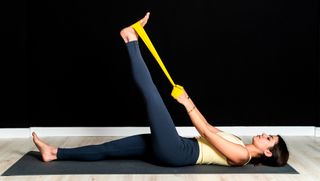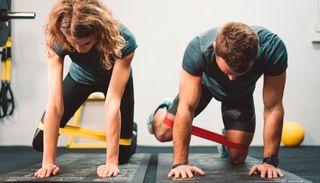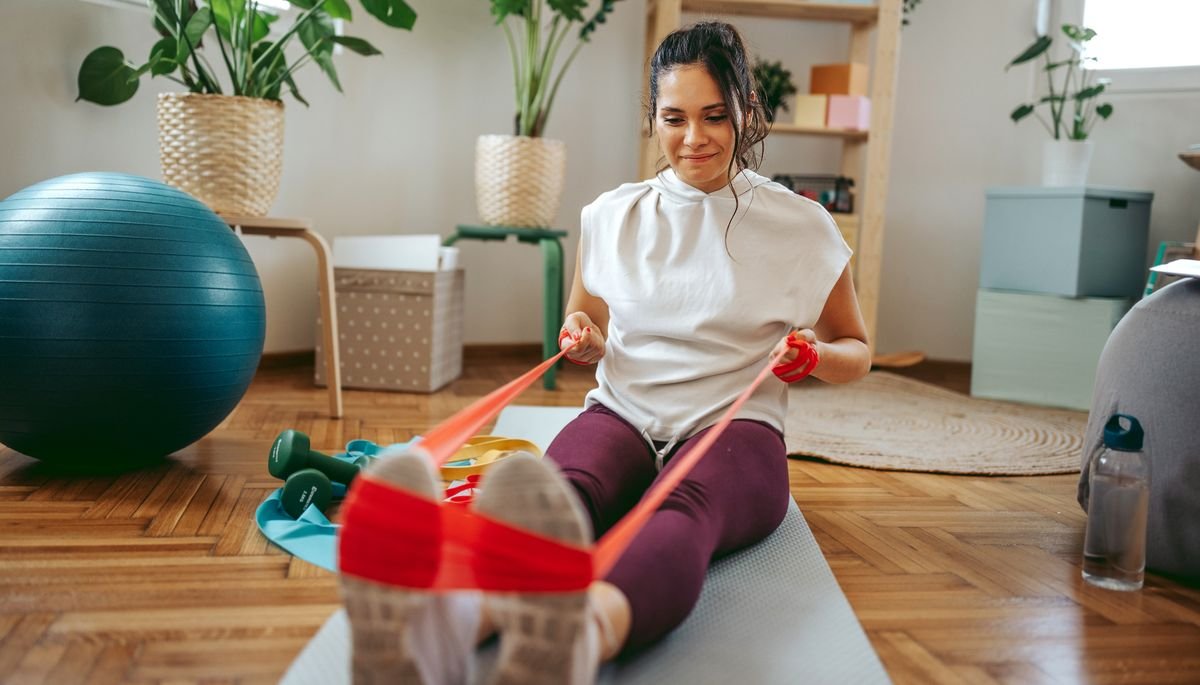With so much free weight training available, you might not think you need to invest in equipment for your home gym, but if your goal is to get stronger, adding some extra equipment can help you see changes faster.
Dumbbells are the obvious choice, but Pilates instructor Jodi Montlake says resistance bands are a much more useful piece of equipment, especially if you’re on a budget.
“Resistance bands are lightweight, inexpensive, and add strength and intensity to your workout,” says Montlake, “plus, they help with stretching and improving mobility.”
Bands add resistance to your workout, just like weights do (as we discussed in our comparison of resistance bands vs dumbbells). Because the movement is more difficult, your muscles have to work harder, which leads to muscle adaptation and growth.
But beyond just adding resistance, bands can also change up some of the exercises you do: “Sometimes the bands are there to make the exercise harder, but they can also provide support and make the movement easier,” says Montlake.
This makes it a great piece of equipment for beginners. It’s also reasonably priced, so if you’re new to training, it’s a good idea to try it out instead of buying expensive weights.
Another benefit of resistance bands is their versatility: “With dumbbells, you usually need a different weight for each exercise, whereas with resistance bands you can shorten the length to make it more difficult or lengthen it to make it more difficult,” says Montlake.
Pilates trainers recommend starting with a long, medium-weight resistance band: “I prefer long bands because you can do more with them, especially in standing Pilates exercises,” she says.
To get the most out of your resistance bands and lengthen, strengthen and support your muscles, here are three exercises Montlake recommends.
1. Single-leg stretch

(Image source: Westend61 / Getty Images)
This is a mobility exercise where the stretch is enhanced by the band.
- Lie on your back and wrap a resistance band around your right foot, bringing the other end of the band close to your body to create tension.
- Keeping your left foot on the floor, stretch your right leg as far as possible.
- Keeping your leg straight, slowly lift your right leg and pull it towards you, feeling a stretch in the back of your hamstring.
- Hold for 30 seconds and repeat with your left leg.
2. Fire hydrant

(Image by Dziga Plakhtar/Getty Images)
This exercise helps develop lower body strength because the resistance band adds tension and difficulty.
- Start in an all-fours position with your hands under your shoulders and knees under your hips, with your back straight.
- Place a resistance band around both of your legs just above your knees.
- Engage your core and raise one knee out to the side until your thigh is parallel to the floor.
- Hold at the top for one second, squeezing your glutes, then slowly lower your legs back to starting position, making sure your knees don’t touch the floor.
- Repeat this 8 to 12 times, then repeat on the other side.
3. Rollup

View
This exercise uses a resistance band for support and to facilitate the movement.
- Sit on the floor with your legs stretched out in front of you.
- Wrap a resistance band around your feet and hold the other end with both hands.
- Keeping your back straight, extend your arms holding the band in front of you.
- Relax your shoulders and engage your core, lower your torso to the floor. Drop each vertebrae down, rotating downward. Keep your arms straight and maintain tension in the band. Finish with your back flat on the floor and your arms extended overhead.
- Use the band to slowly roll yourself up in a controlled motion.
- Repeat this eight times.

